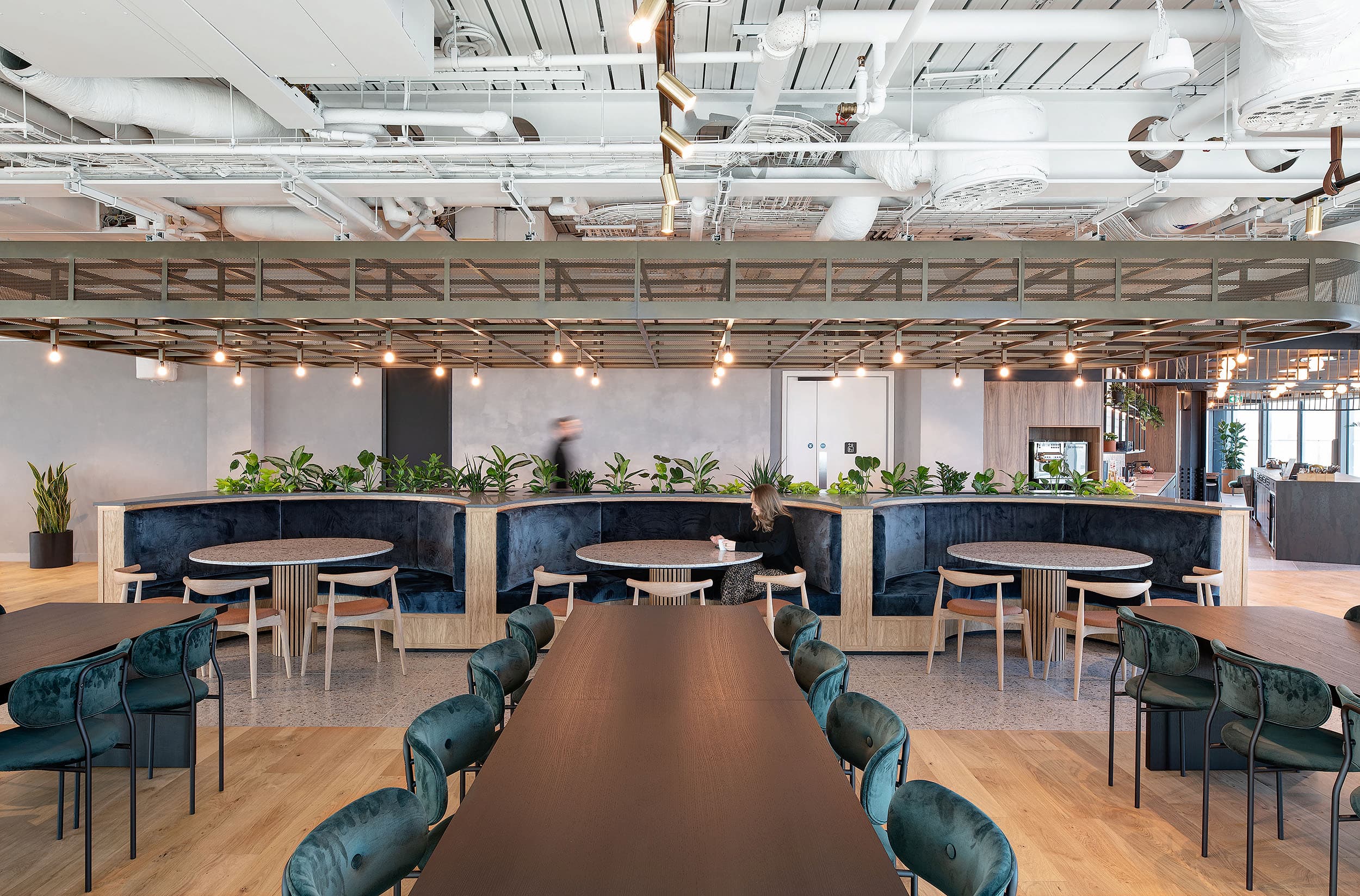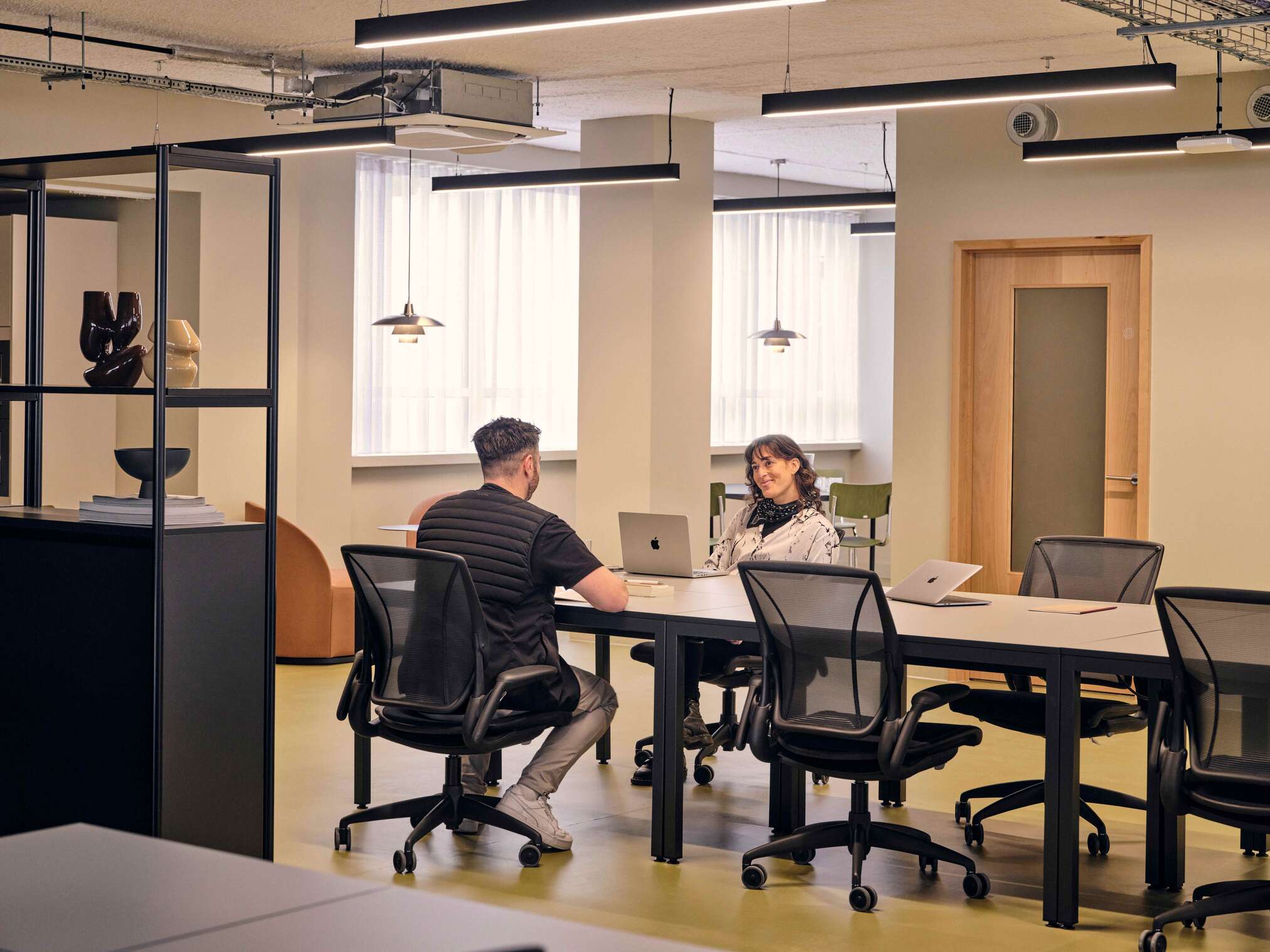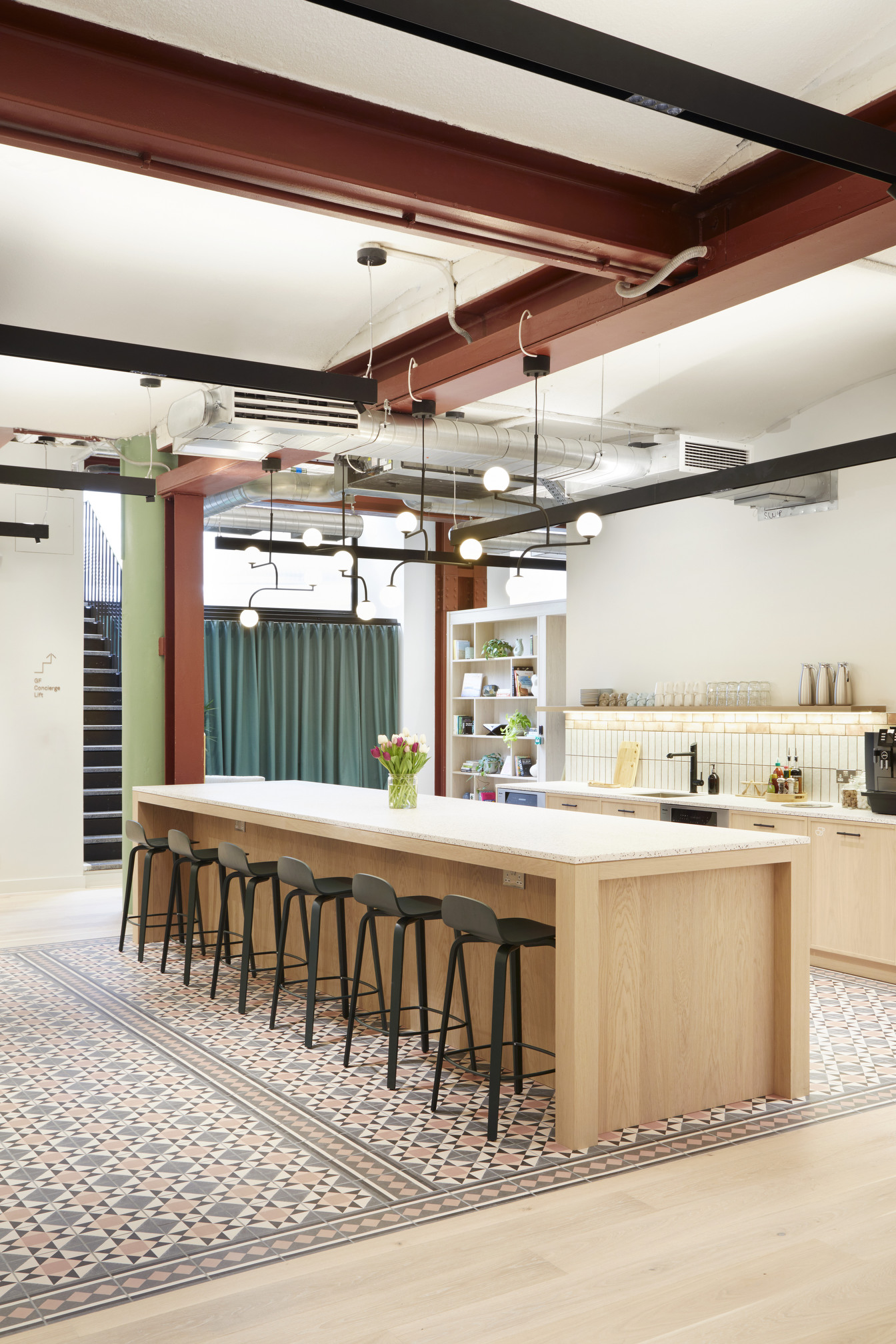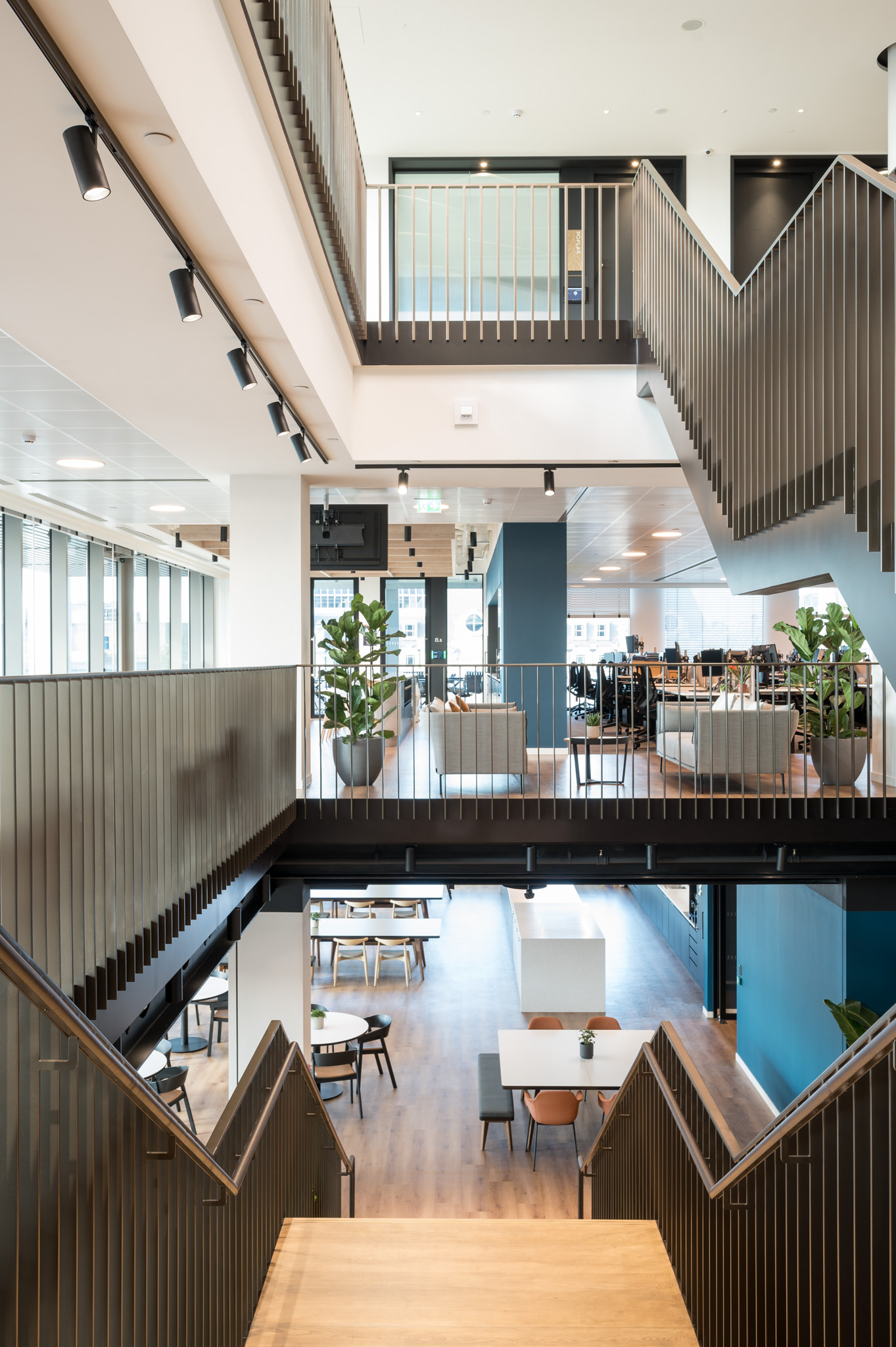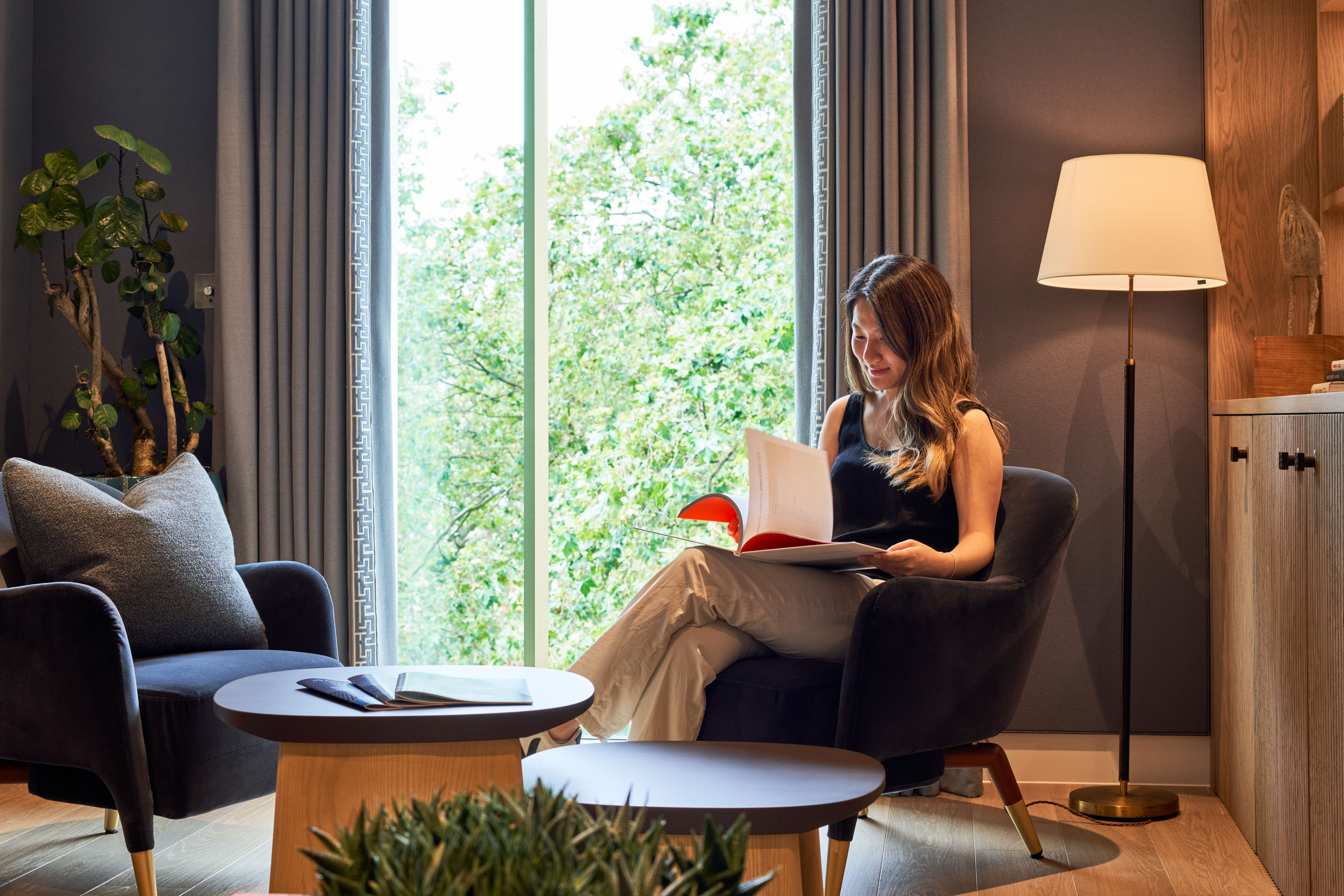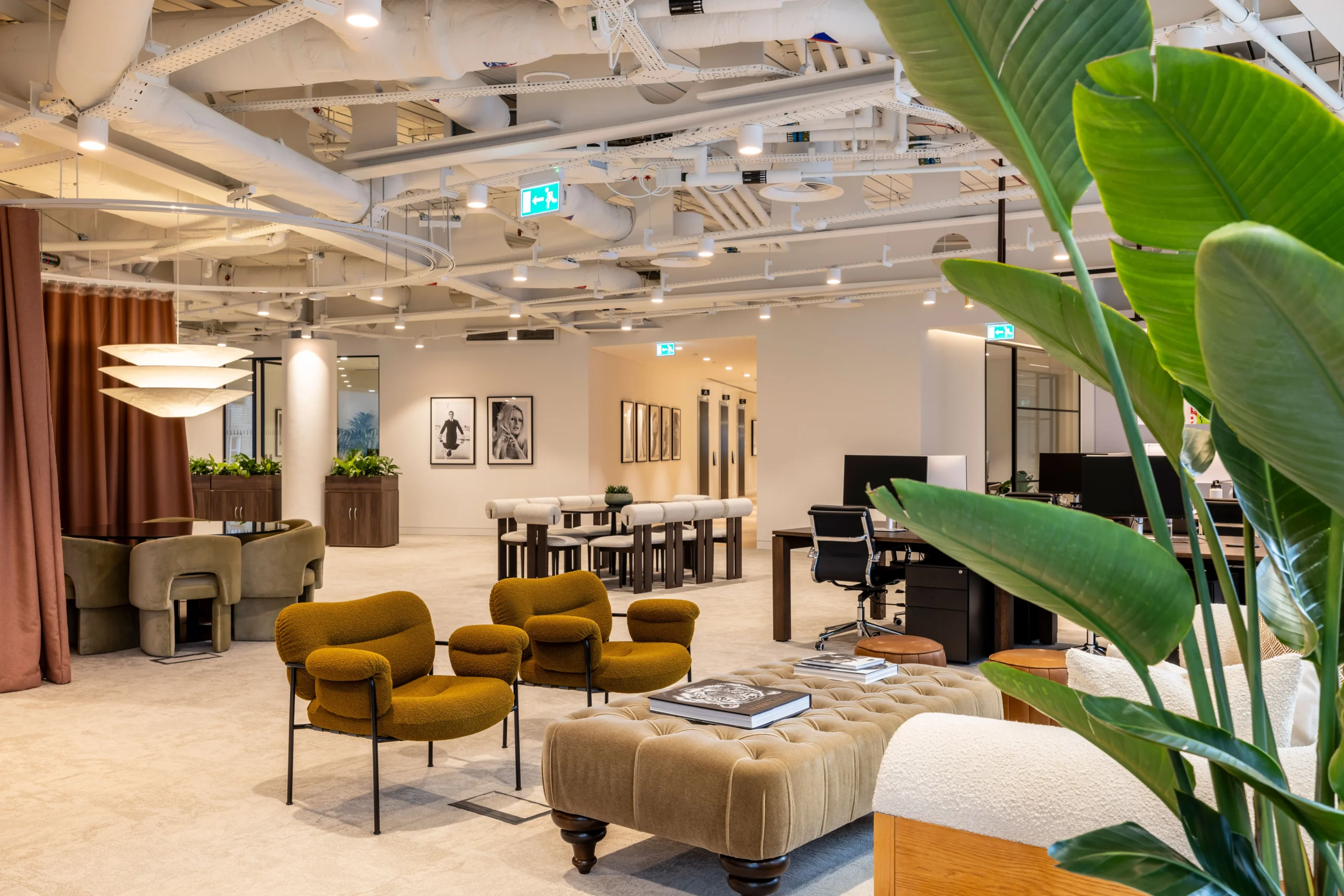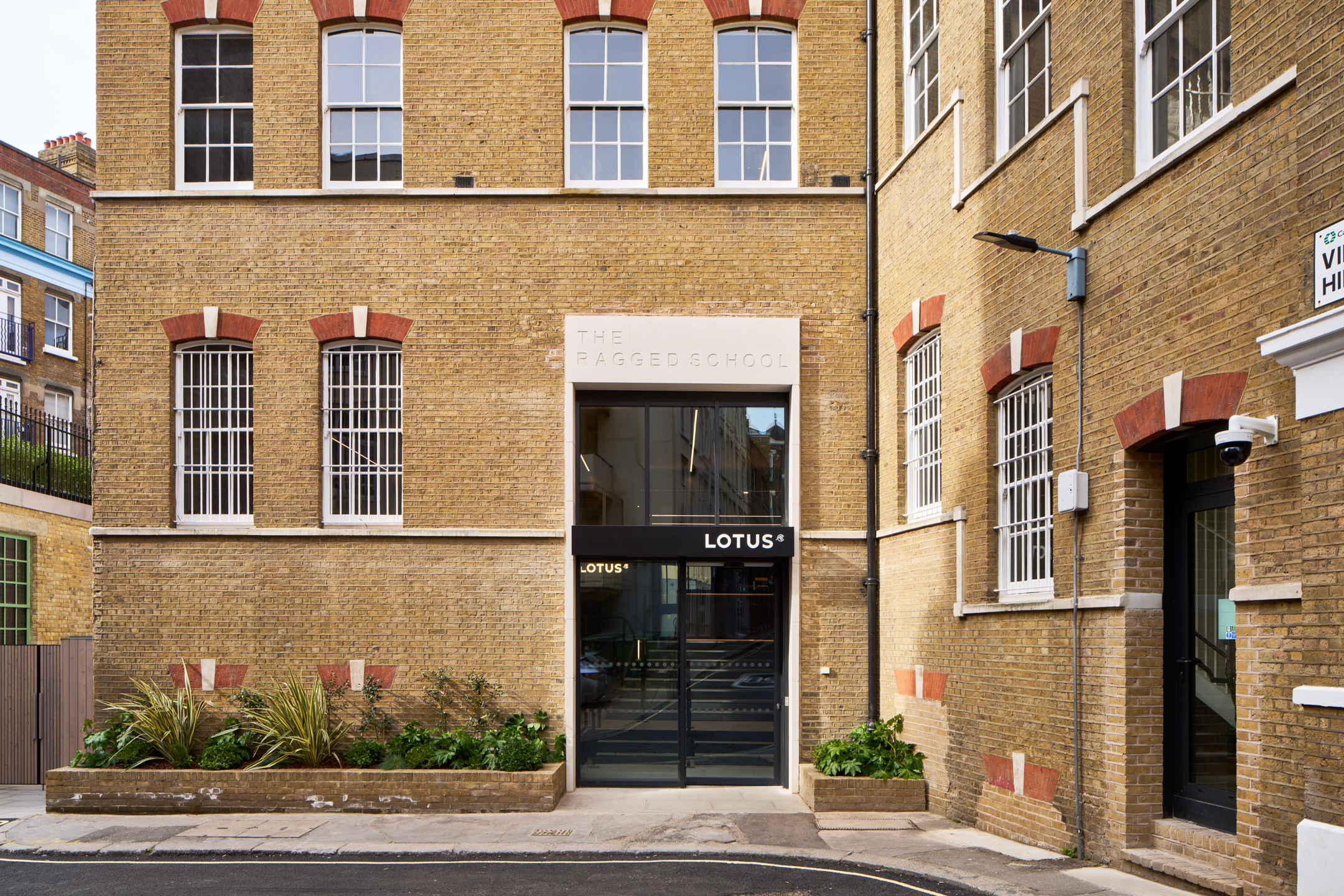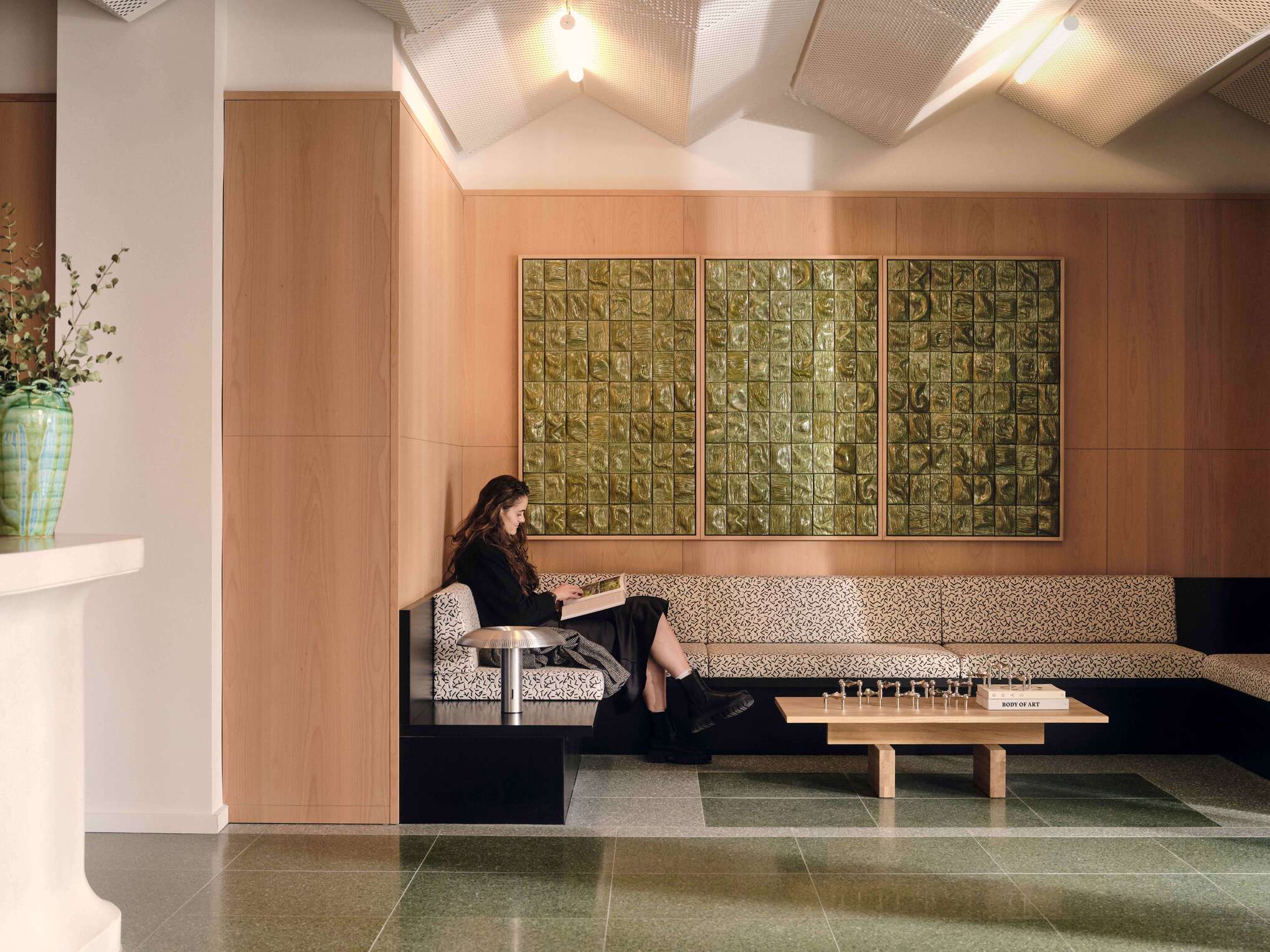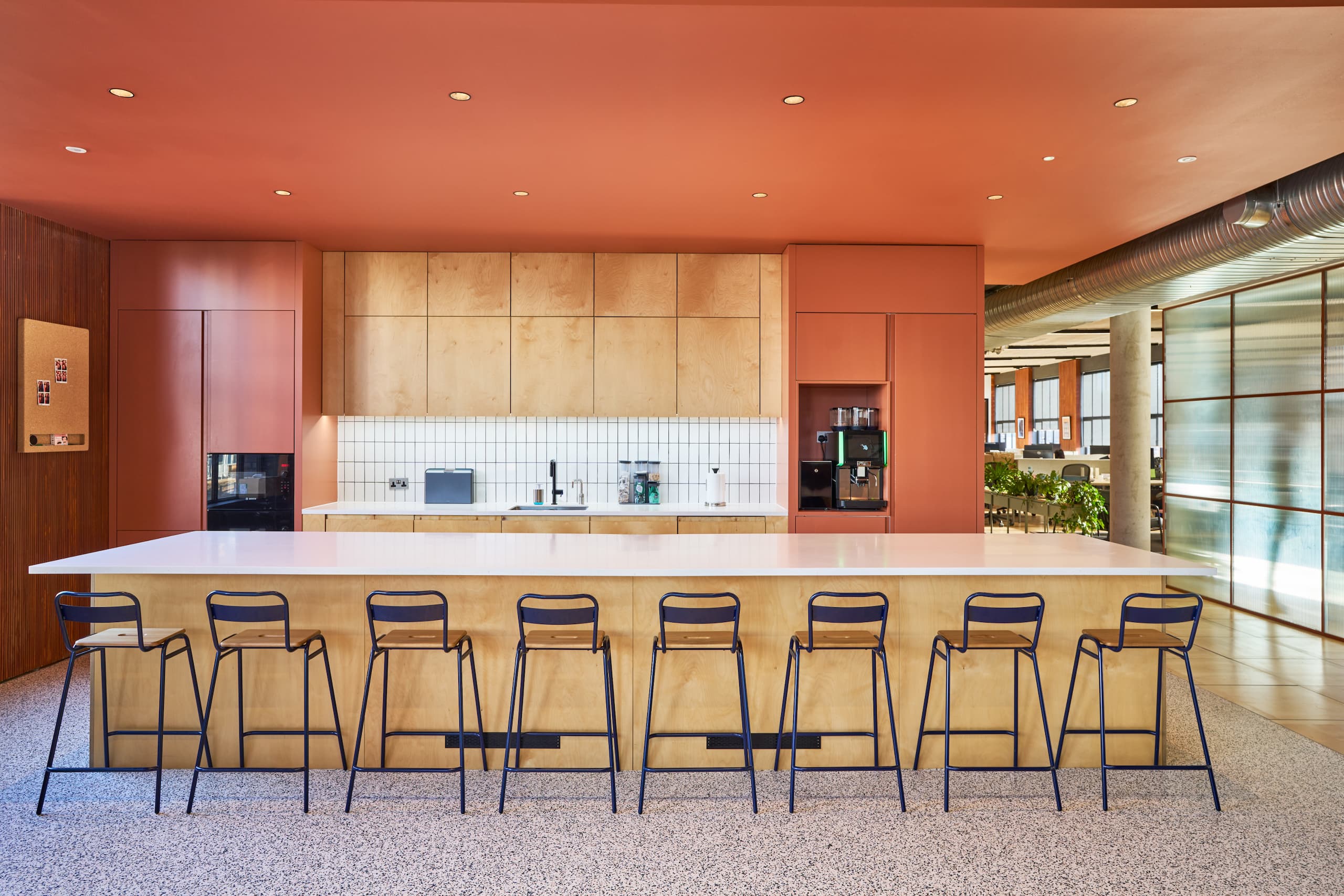3 Trends Shaping the UK property market into 2024
The UK may have avoided a recession, but economic pressures continue to present challenges for the property market, making it more important than ever to offer the types of spaces occupiers are looking for. Sustainability, wellbeing and amenities remain deciding factors in the desirability of commercial real estate. This is how and why they’re continuing to shape the future of the property market.
High interest rates and inflation are still the economic reality in the UK. In real estate, comparatively high debt costs have led, predictably, to a drop in investment. But as companies grow bolder, some familiar forces are set to propel interest in commercial real estate: sustainability, wellbeing and the growing importance of amenities. All three of those drivers fall squarely under the umbrella of Environmental, Social and Governance, or ESG.
“There is still high tenant demand for office space with solid ESG credentials,” explains Lindsay Dowden, Managing Director at Modus. “And we expect to see a high level of engagement with landlords and funds to reposition existing buildings to meet the government’s targets in what is an evolving regulatory environment.” There are many key considerations asset managers and landlords need to be aware of to operate successfully in today’s ESG-motivated market. This article is an overview of some of the wider trends spurring the evolution of commercial real estate in the UK.
Sustainability
Stricter energy efficiency standards are a win for the planet and a steep investment for property owners – but one that will pay off.
Minimum Energy Efficiency Standards are shifting
As Minimum Energy Efficiency Standards (MEES) rise, buildings must achieve higher Minimum Energy Performance Certificate (EPC) ratings, with E being the current minimum. By 2027, that minimum could rise to a B. It used to be that simply letting a property that fell short of the Energy Efficiency (Private Rented Property) (England and Wales) Regulations 2015 was against the law. Now, the same standard applies to existing tenancies. This means that, should a property fall below standard in the middle of a lease, landlords may suddenly find themselves subject to fines up to £10,000 or 20% of the property’s rateable value.
A worthwhile expense with significant benefits
Owners finding themselves in sudden need of energy efficiency updates are not alone. “An alarmingly high percentage of real estate in the UK does not meet the criteria to achieve government targets and will need significant investment to avoid obsolescence,” Lindsay warns. According to the Department for Levelling Up, Housing and Communities, 70% of London office space falls below the mandatory B rating. Savills estimates the average cost of upgrading to 2030 sustainability standards to be £40 per square foot in addition to the cost of refurbishment. That’s not a small level of investment, and it’s a financial burden that will undoubtedly be harder to afford for those outside of major cities.
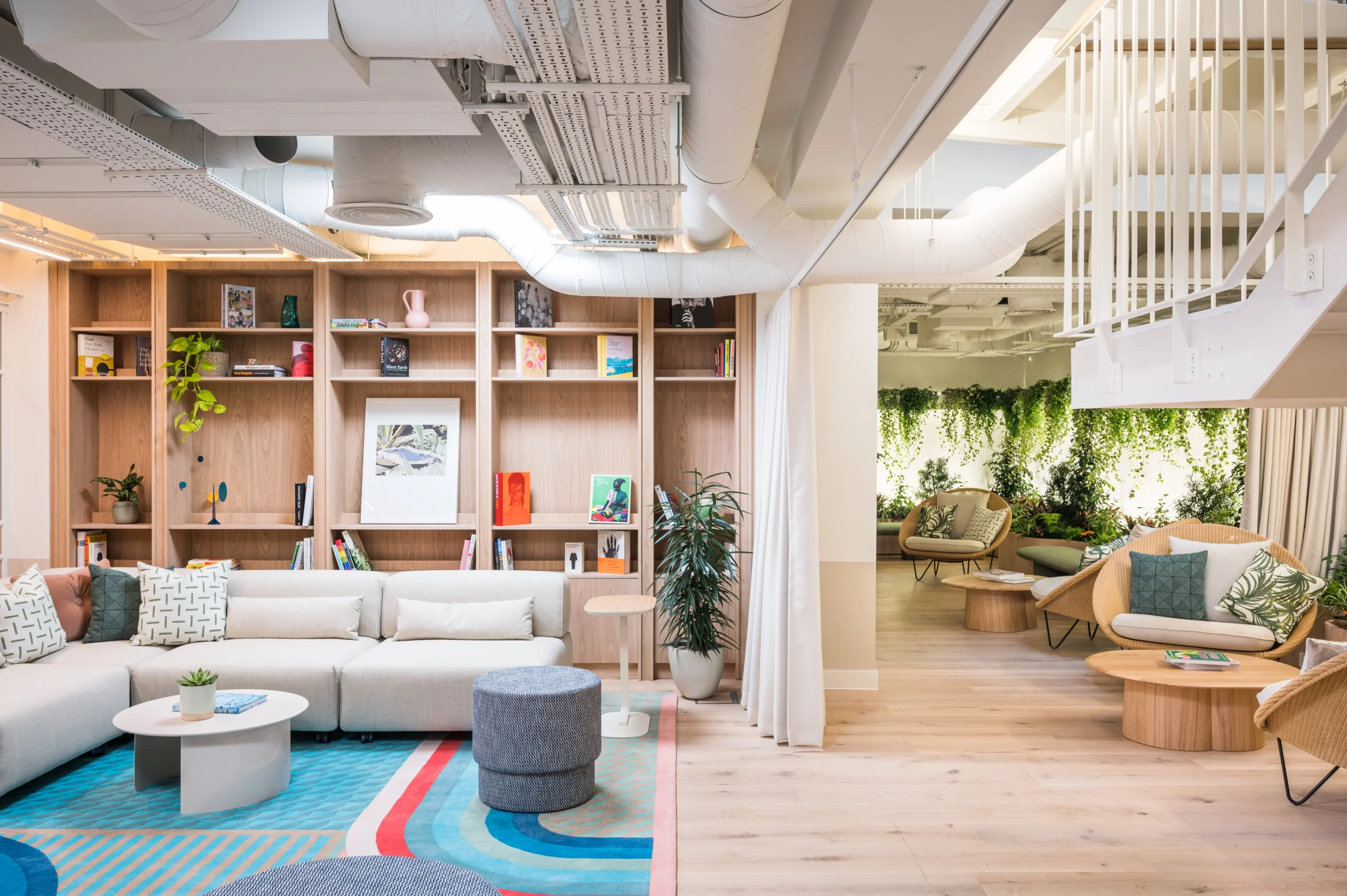
The good news is rising energy efficiency standards correlate with a surge in demand for green spaces. Occupiers are looking to achieve their own decarbonisation goals, and a clear preference for higher sustainability ratings has not only driven an increase in the construction of buildings with certifications like BREEAM and NABERS-UK, but led to owners and occupiers working together to devise green leasing strategies that help both parties reach their sustainability goals. Property owners and developers who invest in sustainably-minded spaces by agreeing such strategies or retrofitting existing spaces, stand to benefit from lower operational costs, increased asset value and higher rent rates. As Lindsay says, “sustainability credentials within real estate assets are now synonymous with grade A office space commanding higher rent than less efficient comparables as tenants look to align their ESG policies.”
Minimum EPC rating requirements will undoubtedly continue to creep upwards. Owners and occupiers should work together to achieve their sustainability goals and prevent any unforeseen costs or legal action; smart technology is making it easier than ever to collaborate by sharing data on energy usage and devising plans to reduce it. Investing in higher sustainability standards is an up-front financial commitment, but one that makes commercial properties much more desirable and future-proofs against stricter minimum ratings in years to come.
European investors are acquiring London’s second-tier office space
As commercial landlords sell off pieces of their portfolios to afford the updates required to achieve the new EPC minimum, investors are acquiring the outdated assets, usually with plans to refurbish them. The amount of property changing hands is noteworthy – £690 million worth over the last 12 months. For anyone with the means to do so, the investment comes with the potential for high returns. Nearly half of those purchasing London’s unwanted commercial space are high-net-worth European investors. As Nick Braybrook, head of London capital markets at Knight Frank, explains: “Acquisitions by ultra-high net worth investors reflect their ability to capitalise on reduced prices while also, in many cases, benefiting from a significant currency advantage against a weaker pound.”
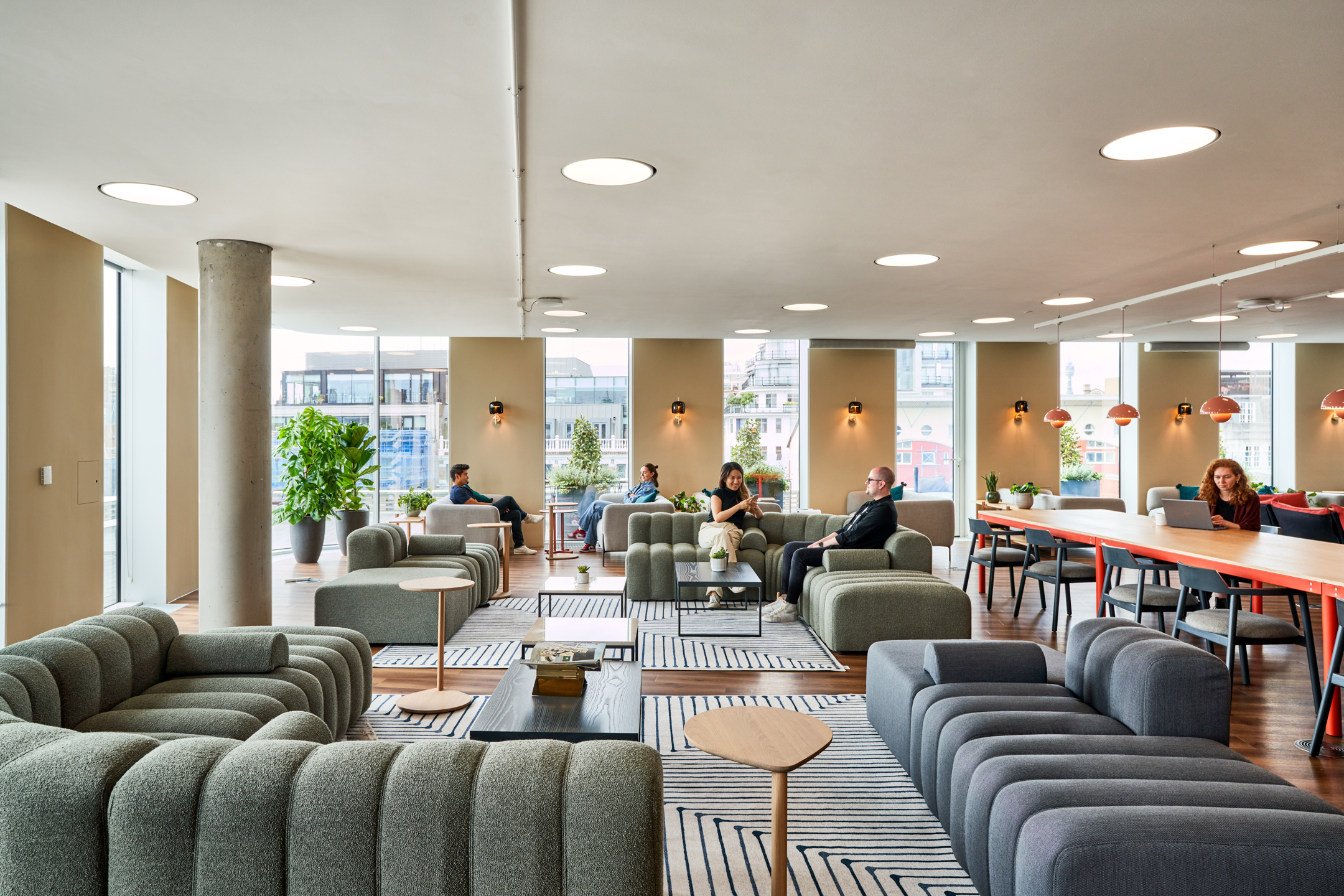
Wellbeing
Smart technology means better built environments
Truly the intersection between sustainability and wellbeing, intelligent technology and integrated monitoring makes it easier than ever to track energy use and adjust consumption. And it’s not just a sustainability exercise – building services monitoring helps facilities management teams and clients understand how to create healthier, more comfortable built environments.
Atamate, one of our trusted smart technology partners, have honed building services monitoring like a craft. One example being their Mesh-3 ceiling censor. At less than 15cm in diameter and 5cm tall, it’s roughly the size of a standard smoke detector, but able to capture a monumental range of data including humidity, VOC, CO2, noise levels, light levels and occupancy data.
Wellbeing is becoming increasingly tangible – and measurable
Wellbeing has long been considered near-impossible to quantify. And for good reason: it’s notoriously difficult to measure things like mental and physical health, and a building’s impact on the many different aspects that influence both. Gensler are working to devise a list of building features that have a measurable impact on wellbeing, as well as clearer methods for interpreting ESG metrics as a whole.
As the factors influencing wellbeing and other aspects of ESG become easier to understand and monitor, businesses are shifting from a reactive approach to a proactive one. Rather than making improvements to existing fit outs or developments, we’re seeing ESG come to the fore as an increasingly powerful part of design decisions.
Not only that, but developers are looking beyond site-specific impact toward a building’s relationship to the surrounding community. Tree coverage is a good example – research shows that streets that aren’t lined with trees are significantly hotter than those that are. Deciding to work trees and the protection their canopy provides into landscaping is one way developers can have a positive impact on surrounding areas, and see a bump in ESG metrics as a result.
Amenities
Ecosystems like campuses signal a new level of productivity and community across commercial real estate.
Multi-purpose workspace is not unique anymore: it’s a necessity. Breakout space, lounges, collaboration space and a range of meeting rooms are table stakes when it comes to a successful working environment. And the next wave of workplace evolution sees an entirely new level of productivity for businesses, as well as a higher degree of cross-pollination and community. Indeed, JLL noted connected communities and innovation clusters as two of the top 10 CRE trends in 2023, proving that organisations have been prioritising multifaceted markets and spaces for some time now.
Following changes in remote and office-based working in 2020, we’ve seen a reappraisal of the way people use commercial spaces with a focus on making those spaces work harder for both owners and occupiers. It’s something Modus has been working on in conjunction with the UK’s most prominent landlords. “We’ve been reviewing and repurposing existing stock and growing our engagement with co-working, flex and amenity operators,” says Lindsay. He explains that these operators “…are key providers of the blended services model that strongly features in high performing buildings.”
Higher expectations for building management
Front of house reception is no longer viewed as a remarkable amenity. Occupiers expect property management to provide an onsite team that helps curate a more stimulating and versatile environment by offering both amenities and programming. A result of a collective shift in the work/life balance barometer, the surge in demand for high-quality amenities sees developers and landlords working to provide things like cafes, gyms, childcare and other compelling retail offerings in close proximity to workspace. Networks of commercial spaces take this concept one step further.
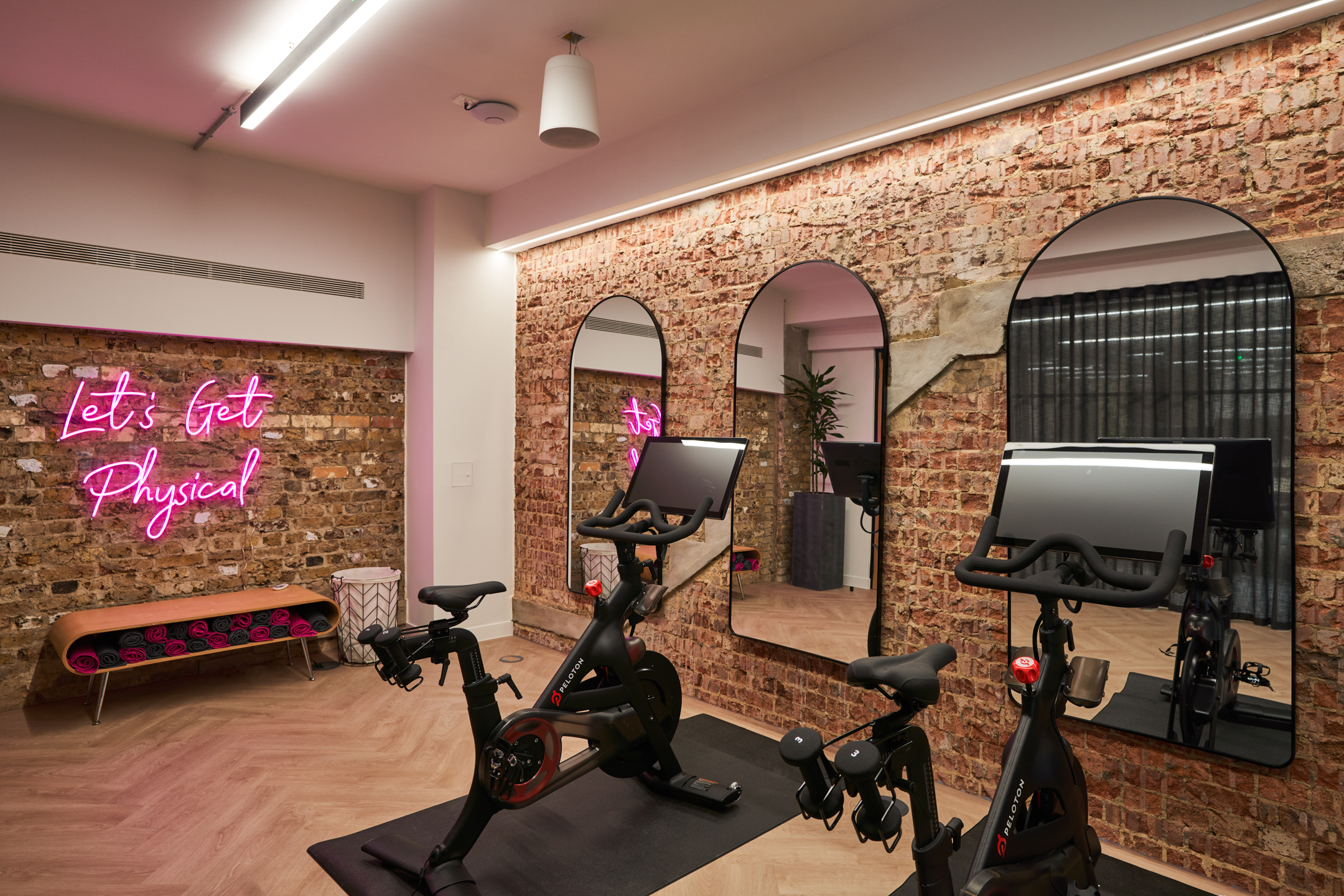
The rise of the campus
Campuses are ecosystems of world-class workspaces surrounded by cultural destinations, transportation hubs, residential areas and other resources. They tend to connect businesses within the same or similar industries, putting like-minded innovators in close proximity. The idea here is that businesses benefit from a host of resources, whether that be collaboration across corporations or something as concrete as international transportation links. British Land’s campuses are a great example of offerings that are curated with this sort of ecosystem in mind. Developers who own larger swaths of property can offer businesses space to grow within their campus, with the ability to take more space in the same buildings and areas as and when they need.
As the UK property market continues to gain momentum, sustainability, wellbeing and amenities will only have a stronger impact on the desirability of commercial spaces.
These aren’t necessarily new trends. In fact, they’ve been shaping the commercial real estate market for years. But the level of commitment to these areas that it takes for spaces to stand out is undeniably changing. Lindsay adds: “the coming 12 to 18 months are expected to be critical as the UK property repositions itself and it may take a number of realisations and realignments, some of which are quite different from the status quo of the past decade, to get there.”
Occupiers and governing bodies alike are raising the standard of consideration surrounding sustainability, wellbeing and amenities. And, in order to maintain a successful property portfolio, owners will have to continue to deepen their level of commitment to all three.
Modus is proudly B Corp certified. If you’re an owner or occupier interested in learning more about ESG-minded fit outs and developments, get in touch with one of our experts.

